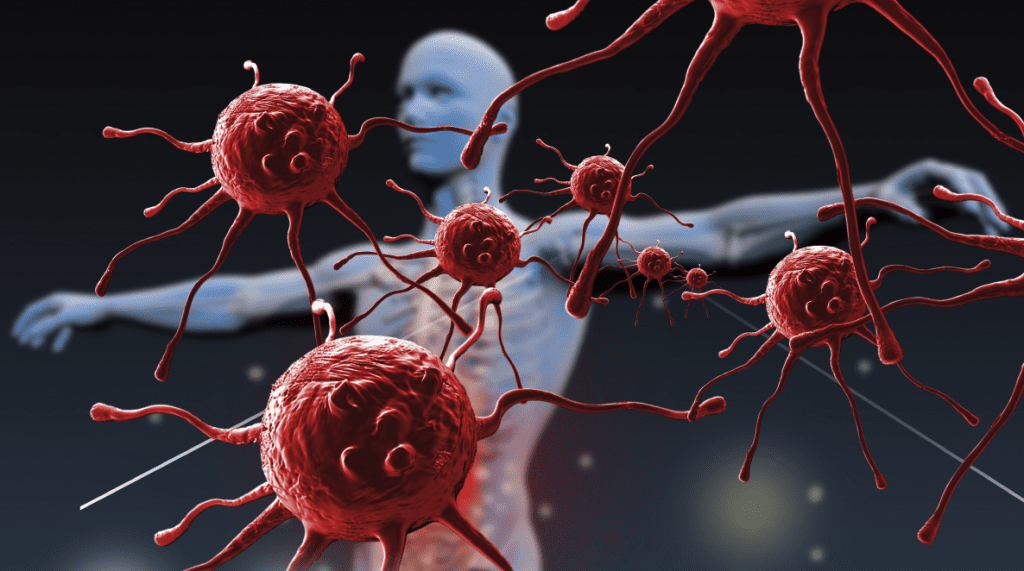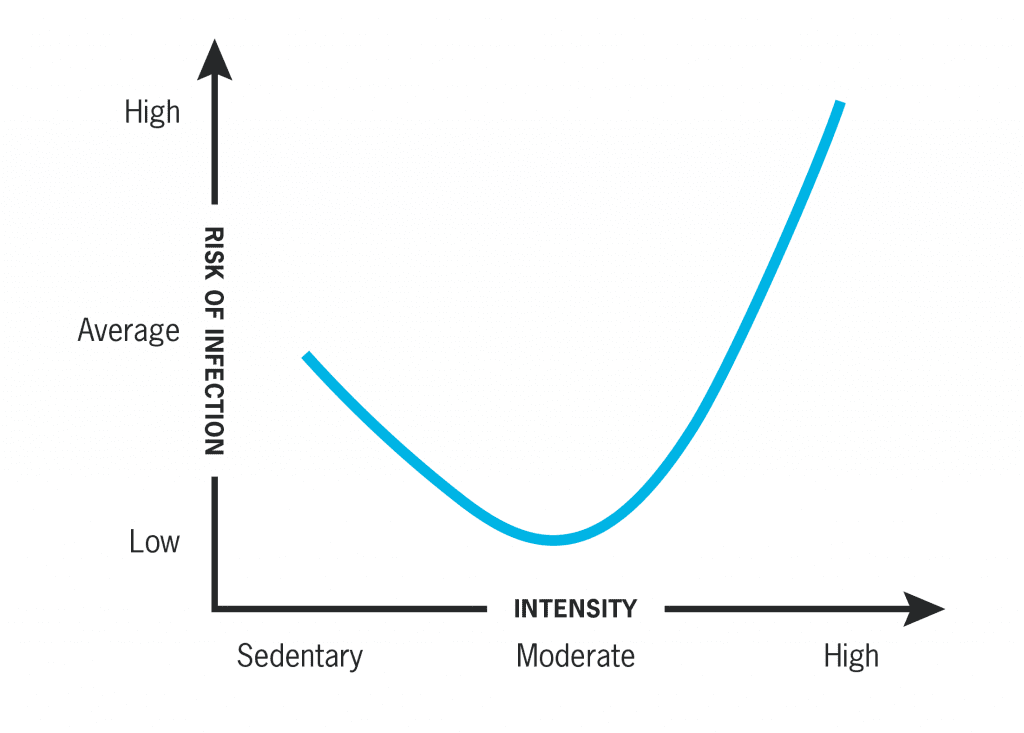Depression: Increasingly common, yet poorly understood. Felt intensely by the sufferer, yet often invisible to the outside world.
Least fair of all: Studied ad nauseum, and yet, for too many people, seemingly unconquerable.
I know that feeling.
I’ve struggled with depression a few times in my life, most recently a couple of years ago.
During my “down” periods, I tried everything
Waiting it out (I don’t recommend it). Therapy (valuable, but by no means a quick fix). Antidepressants (important to my recovery but not, as they’re sometimes portrayed in the media, a cure-all).
I have yet to find the magic bullet.
Complex, multifaceted, stubborn. When I boil it all down, here’s the takeaway: Depression really sucks. If you’ve ever gone through it on any level, you already know that.
But during my last bout, just when I thought I’d tried everything, I stumbled upon what might just be the best thing I’ve ever done to feel better.
I started boxing.
The intense physical workout was a great relief. Boxing requires your full attention. You can’t think about much else — least of all the nuances of your feelings — when you’re focused on not getting your lights knocked out.
I poured more and more of myself into it. Soon, I even started changing my diet to support the boxing — and my performance improved.
Then I thought, Why stop there? What if optimizing my nutrition could help me feel better mentally, not just physically?
So, I started exploring.
I’m not alone
And if you’ve struggled with depression, you’re not alone either.
Depression affects more than 120 million people worldwide, making it the leading cause of disability, according to the World Health Organization.
In North America, the problem is even more pronounced. Statistics vary a bit, but most data sources show that at least 6 percent of U.S. adults are depressed and one in 10 are on antidepressants.
But not everyone reveals their secret sadness. This means depression might affect even more people than we realize.
And depression isn’t just a mind game. It stamps itself all over our bodies.
One recent study captured high school seniors’ struggles with depression.
- 23 percent couldn’t sleep.
- 36 percent couldn’t remember things.
- 30 percent felt overwhelmed.
Others felt lost, ate too much or too little, or felt like they were almost literally drowning — short of breath, gasping for air.
Even if they’re not calling themselves “depressed” or going to the doctor for treatment, their bodies bear witness.
Though the 1980s-era Generation Xers supposedly invented the downer and 1990s grungers perfected it, Millennials vastly outnumber them in depressive symptoms.
Not only is depression distressing, it’s frustratingly, mockingly ironic: It’s one of the most common diseases, but uncommonly — and notoriously — hard to treat.
About a third of people being treated for clinical depression are considered “nonresponders.” They try drug after drug, with no relief. Another third feel a little better, but still not great.
If you’re depressed, you already feel bad. On top of that, you feel like you’ll never get any better.

Major depression is different from your everyday bummer
Everyone has bad days, maybe even a string of bad days.
Major depression is different. It’s like all color goes out of the rainbow. All oxygen goes out of the air.
Everything is just… harder.
Getting through a day is like pushing through thick tar. When you try to think or remember, it’s like your brain is full of old rusty gears that barely turn.
Your body is heavy. Achy — perhaps nonspecifically sore, painful in weird places.
You feel hopeless, guilty, worthless, and/or totally helpless. Any energy you have goes to feeling irritable, or maybe crying.
Nothing is interesting or fun, even the stuff you used to love.
Your appetite is out of whack. Perhaps you’re ravenously hungry. Or the opposite — chewing (or caring about potential starvation) seems too hard.
In extreme cases, you just think What’s the point? You might even think about ways to just stop doing anything at all.
Like I said, depression sucks.
As do the side effects of the many medications used to treat depression. For many people, the drugs don’t work. For some, they may even make them feel worse.
Is there another path?
Can nutrition make you feel happier?
Maybe.
Mental health disorders are complex. So is the brain. And so are the foods we eat, and the ways our bodies interact with those foods.
We’re still new to this game of figuring out exactly how the brain works, and exactly how nutrients may improve brain health.
Still, there are some promising possibilities.
How eating right may boost mental health
Your brain is greedy. It needs a lot of energy to work properly and to create neurotransmitters — chemicals that send signals through the nervous system.
Without enough energy or the right nutrients, your brain won’t get what it needs. In fact, one study suggests that eating a lot of nutrient-sparse processed foods could up your chances of becoming depressed by as much as 60 percent.
Other research has shown that nutrient deficiencies often look like mental health problems.
Here are some pathways by which a healthy diet might protect your brain.
Nutrition can fight inflammation
Chronic inflammation happens when our body turns on an immune response, then doesn’t turn it off again. The resulting damage and chemical stew is linked to all manner of health problems, including cancer, heart disease, neurodegenerative disorders like Alzheimer’s… and depression.
One theory is that proinflammatory cytokines — markers of inflammation — may interact with other proteins in the brain, promoting changes that contribute to depressive illness.
Nutrition can get your gut health back on track
Your GI tract does more than move food from one end to the other. It’s responsible for absorbing the nutrients your organs — including the brain — need to function properly, and for constraining harmful bacteria and other molecules so they can’t get access to (and harm) the rest of the body.
To do these important jobs, your gut relies on healthy intestinal cells and beneficial bacteria, which help manufacture vitamins, absorb minerals, and digest food.
If your gut microbiome is out of whack, or if the problem develops, via irritation or inflammation, into full-blown gut permeability (a.k.a. “leaky gut”), your brain could be in trouble.
Consider this: 60 liters of blood are pumped into your brain every hour, providing oxygen, removing waste products, and delivering nutrients. If that blood is nutrient-deficient, or carrying junk that doesn’t belong, it’s going to interfere with your brain’s function — specifically its ability to create necessary neurotransmitters (more about that in a moment.)
As if that weren’t enough, a permeable gut can encourage more inflammation in the body, turning all of this into an ongoing cycle.
Consider this
Most serotonin — the happy-making neurotransmitter — is made in the gut, not the brain. Poor GI health could prevent its production, meaning you’ve got less of those good, happy chemicals in your brain.
Nutrition feeds your mitochondria
You may remember from high-school biology that mitochondria are the “energy factories” of our cells.
Recent studies suggest that mitochondria play an important role in brain function and cognition — and that sub-optimal mitochondria, and mitochondrial diseases, may contribute to mental disorders, including depression.
We don’t have a complete picture of what mitochondria need to stay healthy. But we know they need lots of nutrients.
Nutrition may promote neuroplasticity
The brain uses nutrients to produce brain-derived neurotrophic factor, or BDNF, a protein that’s essential to the central nervous system.
Some research suggests that BDNF could support neuroplasticity — the brain’s ability to adapt, rewire itself and grow. This would be especially beneficial in recovery from trauma and mental illness.
What might feed our brain?
Our brain is part of our bodies, of course.
So anything that makes our bodies healthier — fresh air, sunshine, clean water, exercise, de-stressing, vitamins and minerals, improved circulation, etc. — will make our brains healthier.
Some nutrients in particular seem to be linked to brain health.
- Omega 3 fatty acids (fish, nuts, seeds, algae oil): Omega-3 fatty acids provide building blocks for healthy brain development and function, and thus have been explored for their potential role in preventing everything from ADHD to Alzheimer’s. In terms of depression, studies are mixed: Some suggest that supplementing with these healthy fats (via fish oil) may help ease symptoms, but we’re just not sure.
- B vitamins (meat, eggs, seafood, green leafy vegetables, legumes and whole grains): Studies have shown that a deficiency in B vitamins (particularly B12) can be linked to depression, though we don’t know exactly why. In a 2014 study from the British Journal of Psychiatry, supplementing with B12, B6 and folic acid improved subjects’ response to antidepressant medication. But a year later, a study published in the same journal found no improvement in older women who were given the supplements.
- Vitamin D (sun exposure; fortified breakfast cereals, breads, juices, milk): Vitamin D is required for brain development and function. Deficiency in this “sunshine vitamin” is sometimes associated with depression and other mood disorders, though a recent research review showed mixed results.
- Selenium (cod, Brazil nuts, walnuts, poultry): Selenium is an essential mineral, meaning we have to get it from food. Among its various roles, selenium works with other nutrients to create antioxidant balance in our body’s cells. Many studies have shown a link between low selenium and depression, but the mechanism is unclear. One hypothesis is that selenium’s function as an antioxidant could be necessary for preventing or managing depression.
- Tryptophan (protein sources including turkey, beef, eggs, some dairy products, dark, leafy greens): One of the 22 essential amino acids, tryptophan is a precursor to serotonin. It’s not well understood, but low tryptophan seems to trigger depressive symptoms in some people who have taken antidepressants.
It’s not as simple as just supplementing these. Nutrients work together in context. And we don’t know if low levels of nutrients are a cause or consequence of poor brain health.
So you can’t “biohack” your way to happiness with a few pills or “superfoods.”
If you want to focus on particular nutrients and/or explore possible deficiencies, it’s best to do so with a trusted health professional like a registered dietician, nutritionist or doctor trained in functional medicine.
What to do next
Depression is overwhelming. Don’t try to fix everything at once.
But if you’re ready, consider a small, manageable lifestyle-oriented step or two.
First, make sure you’re eating, at least a little bit. Depression can do a number on your appetite. But no food means no nutrients. No nutrients means sad brain.
Next, consider one of the following basic steps.
#1: Notice and name
Before you even start making any changes, get more aware of what you’re already doing and feeling.
Try keeping a simple journal — for instance, how you’re feeling today on a 1-10 scale, what you ate, and any symptoms that you notice.
This will provide a starting point for observing what foods (and other lifestyle factors) might ease or exacerbate your depression (bonus: writing, in general, has been shown to help).
#2: Eat whole foods
Make this as easy as possible.
- Find fresh foods that don’t take much prep (such as fresh fruits, pre-cut vegetables, or pre-bagged salads).
- Get them delivered, either as a grocery delivery or a healthy meal delivery service.
- If you have a friend-and-family support network, see if someone is willing to help you with the shopping and cooking.
For more tips to help you prioritize whole foods, check out our healthy eating success strategies.
#3: Avoid or limit the depression-promoting stuff
What does your food and feelings journal tell you? Do you notice any connections?
Here are some common ones:
- Alcohol is a nervous system depressant. So, not helpful.
- Caffeine: It brings you up then knocks you down. It may also worsen anxiety and insomnia.
- Sugar: It may numb the pain or distract you from it for a while, but then it makes you feel worse emotionally and physically — especially since it can worsen inflammation.
- Processed foods: Some folks notice that they’re sensitive to things like preservatives in processed foods.
Some people report that gluten worsens symptoms. Use your journal and see what you notice. Try avoiding gluten-containing foods for a week or so, and observe.
#4 Nurture your gut health
Keep your gut bacteria and intestinal cells happy. For example:
- Eat yogurt and fermented foods such as sauerkraut, kimchi, and pickles, or drink kombucha. These must be in their raw, unpasteurized form to offer live bacteria. You’ll find them in the refrigerator section of a well-stocked grocery or health food store.
- Take a probiotic supplement.
- Sip bone broth, a long-simmering stock made with chicken or beef bones. Simply put the bones in a pot, cover with water, and simmer for a loooong time (24 hours is good). The resulting stock contains glycine, which is thought to help with internal wound healing, including in your gut.
- Choose meat and dairy that’s antibiotic and hormone free (if possible), and comes from a trusted butcher or farm. Buy organic if you can.
- Be selective when taking antibiotics, which can kill gut bacteria. If you have to take them, build your belly bacteria back up through fermented foods and probiotics.
- Limit refined sugars and grains, which can make gut problems worse.
#5: Supplement with caution
If there’s one thing experts tend to agree on, it’s “real food first.”
We don’t know exactly how specific nutrients work in the context of individual foods, or how they work within the body — let alone how they work in pill form.
If you’re trying to use supplements to address depression, it’s best to work with a doctor and nutrition coach, who can help determine which ones might be right for you.
Supplements such as fish oil, probiotics, B-complex, and/or a good multivitamin could be helpful for depression, but do your homework: Choose a brand with studies supporting its effectiveness for mental health.
Not all supplements are created equal. A low-quality vitamin might contain too low a dose or be hard to absorb.
Remember the big picture
That’s hard when you’re depressed. Because your world shrinks to a tiny little black hole.
As much as possible, though, try to focus on the big picture.
- Get outside and get sunlight. There’s a reason depression is associated with darkness.
- Ask for help. Start to find your tribe of helpers. That may include a doctor, a therapist, close supportive friends and family members, a fitness trainer, even a pet.
- Move. Depression is immobilizing. Do your best to act against that force by moving whatever you can move, however you can move it.
- Express yourself. Draw, write, talk about what you’re feeling, howl at the moon. Or, like me, smash a punching bag. Whatever gets the bad stuff out. Don’t keep it all in there.
Depression is difficult. I know, I’ve been there.
But building your personal toolbox of helpful actions can be incredibly empowering. There’s no rush. Just start adding in good things to help your body and mind.
Those positive steps truly add up over time.
Bit by bit, things can get a whole lot better.
Eat, move, and live… better.
The health and fitness world can sometimes be a confusing place. But it doesn’t have to be.
Let us help you make sense of it all with this free special report.
In it you’ll learn the best eating, exercise, and lifestyle strategies — unique and personal — for you.
For full article by Camille DePutter please visit http://www.precisionnutrition.com/how-to-fight-depression-naturally-with-nutrition?utm_source=FightDepressionWithNutrition&utm_medium=Email&utm_campaign=FightDepressionWithNutritionEmail











